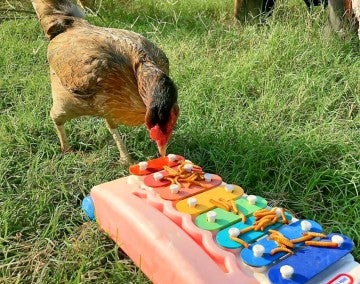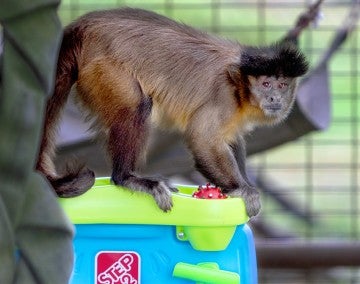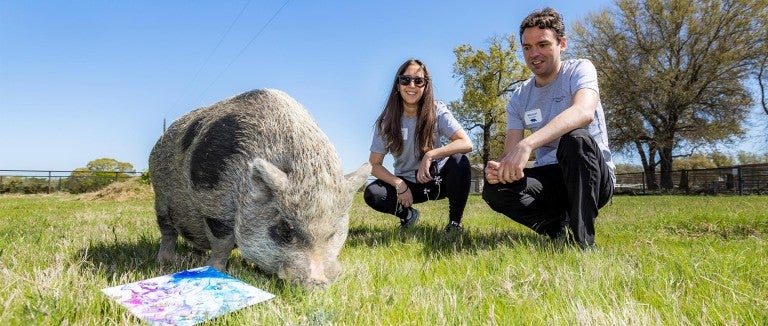Black Beauty Ranch offers a fresh start to the domestic and exotic animals who roam its 1,400 acres. Whether they were rescued from roadside zoos, research laboratories or the exotic pet trade, some struggle to acclimate to life as wild animals. While providing the necessities that support their physical health—food, water and a safe place to sleep—is an around-the-clock job, staff members also strive to support their residents’ mental health.
Animals deprived of opportunities to behave naturally often exhibit signs of psychological distress. Those confined to small cages have been known to pace, over-groom or even self-harm to ease their boredom and anxiety. For some, a new outdoor habitat can be overstimulating.
“I’ve seen this with some animals, where it will take them time to leave the small confinement they were used to because that’s all they have known. The unknown is scary at times—the sun, sound and feel of the grass may be new to them,” says Christi Gilbreth, senior coordinator of outreach and development.
“Our goal is for these animals to be able to live and act as they were meant to be in the wild. We offer them enrichment that will encourage instinctual behavior.”
The dedicated caregivers take species-specific traits and each animal’s individual personality into consideration in all aspects of their care (diet, medication, training, housing and habitat modification), which also includes recognizing what the animals enjoy.
“Willy, our pig-tailed macaque, loves to take things apart—he’s very skillful at it,” Gilbreth says. “So they have to keep this in mind when designing his daily enrichment. They can utilize this trait to keep him stimulated, but they also have to be careful when providing any other modifications so that he doesn’t try to disassemble what he’s not supposed to!”


Enrichment items and activities can vary wildly (pun intended) from animal to animal. The primates enjoy tinkering with toys and taking their time enjoying a snack, whether that means splitting open snap peas to pop the green pods into their mouths or plucking the leaves from a bamboo branch one by one. Some of the pigs snuffle their snouts across a paint-dolloped canvas covered in plastic wrap, creating art that hangs in the visitor center for guests to enjoy.
Ever budget-conscious, the team also gets creative with upcycled and recycled materials. For example, they’ve built a cot using sturdy scraps of wood and donated heavy-duty fire hose, strong enough to withstand the tigers’ curious claws.
To help offset the cost of new items, teams maintain an Amazon wish list from which sanctuary supporters can purchase a gift to be sent directly to the animals. Caregivers add comments to explain how items will be used (and how much they’ll be appreciated).
The tigers, for example, would enjoy tinkling wind chimes in their enclosures and large plastic barrels for rolling. Educational learning toys for children make great gifts for the primates: “Phoenix the capuchin loves enrichment that he can move around and figure out!” reads a comment on a wooden activity block. Various puzzle feeders and other snack dispensers are favorites of the horses and bears, while bubble machines would fascinate everyone (humans included).
The best place for these animals is in the wild, but the team knows enrichment activities like these make the sanctuary a close second. They stop to smile every time they see the animals having fun—the sign of a job well done.
Want more content like this?
This was written and produced by the team behind All Animals, our award-winning magazine. Each issue is packed with inspiring stories about how we are changing the world for animals together.
Learn MoreSubscribe
